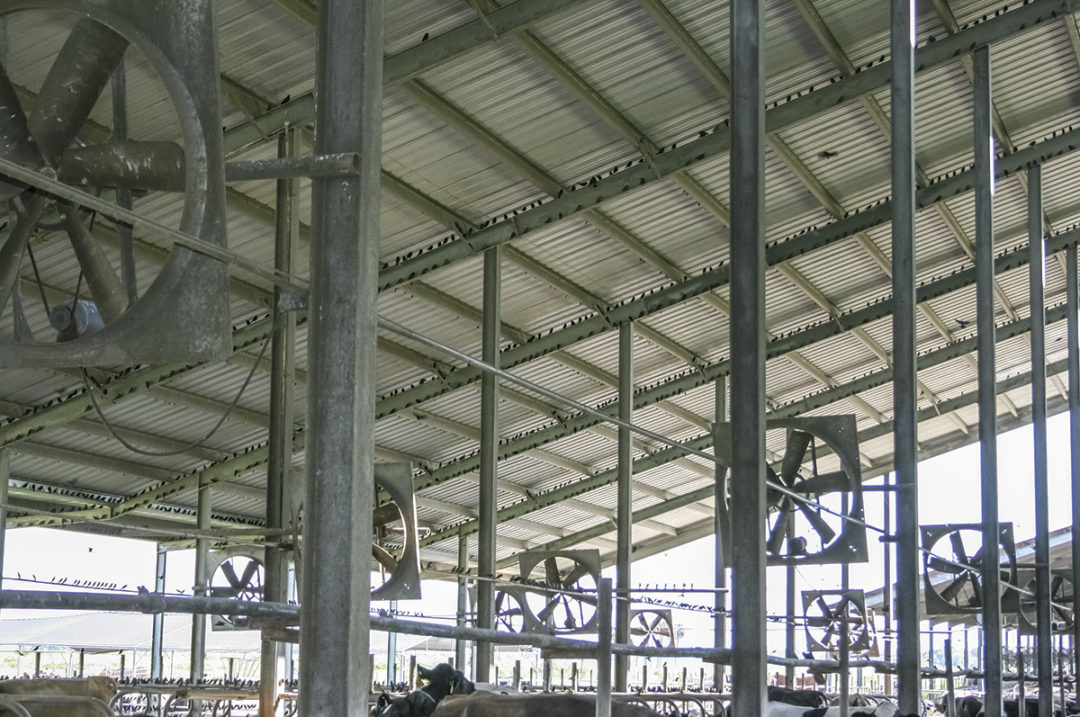Have you heard? The recent mysterious disease affecting cattle in the U.S. is avian influenza, and the source is wild birds. We knew those pest birds were causing problems on farms, but I didn’t expect them to become the root cause for a serious cattle health concern. My research team has been studying pest bird management on dairies for over eight years, and we have learned a few tricks that we would like to share with you.
Below are some highlights from our pest bird management research.
- Seasonality: Pest bird prevalence on dairies in the U.S. is mostly seasonal, in which birds often inhabit dairy barns during the colder months and then move outdoors once the temperatures rise. Regardless of your cow housing system, pest birds will consume and spoil cattle feed at the feedbunk and your stored feed, unless you have effective bird deterrence methods in place.
- Bird species: European starlings, pigeons, sparrows and crows are the most commonly observed pest birds on dairies. It is important to know which species are most prominent on your farm so you can choose an appropriate deterrence method. Let me know if you need help identifying the species, as our team has become quite adept at bird identification.
- Feed loss: A study we published in 2019 estimated the cost of feed loss from pest bird consumption to average around $55 per cow per year. This estimate focuses purely on bird consumption of feed at the feedbunk and does not include any spoilage of feed. Do you know the total cost of feed losses from bird depredation on your farm?
- Dissemination of disease: Pest birds carry many types of bacteria and viruses in their fecal matter and even on their feet. Obviously, birds move from farm to farm, increasing the spread of pathogens. This is how scientists believe the avian influenza strain causing health issues in cattle started. Finding methods to reduce cattle exposure to wild birds, including their fecal matter, is vital to minimizing their effect on cattle health.
- Implementing deterrence methods: If there is one piece of advice you need to hear, it is that implementing pest bird deterrence methods needs to occur when bird prevalence on your farm is low. For most dairies with freestall barns, for example, implementing deterrence methods in the summer months is ideal because the birds are not inhabiting the barns. Once birds establish a night roost in a barn, it becomes drastically more difficult to get them out.
- Investing in bird deterrence: How much should you invest in bird deterrence on your farm? Only you can answer that question. If you are unsure about feed loss, you can use 4.4% loss as a good place to start. The losses that are more difficult to calculate are potential cattle morbidity/mortality from bird exposure. Once you have a decent estimate of your losses from pest bird damage, you will feel more comfortable choosing a deterrence method. Be prepared – your cost of pest bird damage may surprise you.
- Lethal methods: Lethal methods of deterrence may be appealing, but make sure you consider the potential consequences. Shooting pest birds is a popular deterrence method; however, most farmers report the method as only “somewhat effective.” Using poison for bird deterrence is another option, but then you run the risk of unintentionally causing harm to beneficial bird species or other non-target animals.
- Unpredictability of deterrence methods: Contrary to what many believe, birds are actually very smart. Any bird deterrence method you use needs to be unpredictable for the birds, otherwise they will become acclimated to it and it will lose its effectiveness. A great example I can share came from a vineyard. The farmer hired a professional falconer to keep the pest birds out of his vineyard. Everything worked beautifully until the birds started to associate the presence of the falconer’s truck with the presence of the falconer’s raptors. Hence, the birds started flying away when the truck showed up and then returning after the truck left. Birds are smart.
- Lasers: Could lasers be used to deter birds from establishing night roosts in freestall barns? Maybe. We conducted a study last year to take a closer look at this idea. We had limited success, but we learned a few lessons that may make lasers an effective method for your farm. In our case, the lights in the freestall barns at dusk were fairly bright, which decreased the brightness of the lasers. This may be something you want to consider if you are looking at lasers as a solution to your pest bird problem.
- Native raptors: Several native raptor populations are declining, while invasive species populations (European starlings) are increasing. Employing nest boxes and perches on your farm for native raptors may attract them and, ultimately, deter pest birds from inhabiting your farm. If this idea interests you, we have a factsheet available to help you consider this option.
Pest birds cause serious problems on dairies. Now is a great time to evaluate the effectiveness of your bird deterrence methods and to make plans for keeping birds off your farm. It is a win-win for you and your cows.







